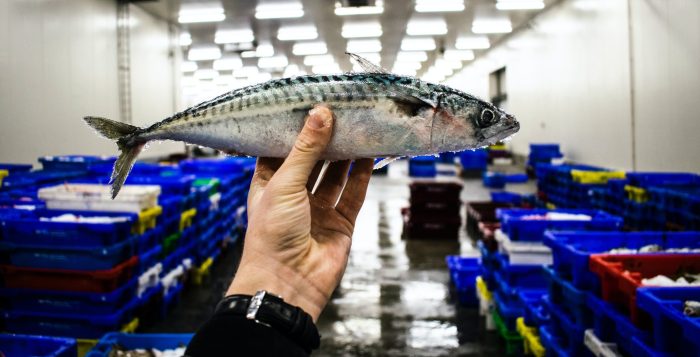Why is the seafood industry so murky on sustainability and how can we change it?

The 2021 Seafood Stewardship Index revealed that the 30 most influential companies in the seafood industry are still struggling to set robust targets to improve their environmental and social practices and be transparent about it. Only five companies have a time-bound target that clearly applies to their entire product portfolio. None of them provide a complete progress report that covers the entire portfolio or break it down by sustainability category (for example whether it is certified, rated, in an improvement project or un-assessed).
Tools such as the data tool developed by the Certification and Ratings Collaboration will help provide insight in how the sustainable seafood movement is progressing towards achieving sustainable seafood production once it has been running for a few years (currently data is only available for 2020 and 2021). However, measuring how individual companies are progressing – both in how well they integrate sustainability in their business model as well as how they are progressing in terms of positive impact on people and planet – is also needed to understand whether the market-based tools and approaches developed by the sustainable seafood movement as well as policies and regulations are working and putting us on the right path towards a sustainable seafood industry.
What are the benefits of transparency?
Transparency supports sustainability progress
The lack of transparency on the sustainability practices of seafood companies is hampering the ability of the sustainable seafood movement to learn what has worked and what has not, understand how much progress it has made and how much there is left to do.
The lack of visibility of how the industry is progressing towards integrating sustainability in their business model is hampering progress in several ways:
- it is demotivating and hampers learning, because we do not know how much progress is being made, what is working and what isn’t and how much still needs to be done;
- it creates confusion, when reporting is incomplete or when it is not clear what standards of sustainability are being met, adding to the existing complexity of the topic of sustainable seafood;
- it does not allow for accountability. Transparency is a pre-requisite of accountability. To evaluate action properly there should be access to all necessary information. If access to information is denied, then accountability cannot be proven. Without accountability, meaning rewarding leading practices and holding laggards to account, the incentive to do better is weakened.
Transparency, if done well, increases trust which in turns increases corporate value
High quality transparency is also about trust which in turn creates and enhances corporate value. Admitting imperfections is a risk but willingness to admit imperfections increases trust as it demonstrates humility and honesty. It helps strengthen relationships – including the one between a company and its stakeholders. Even though trust is an intangible capital that can be hard to measure in monetary terms, it is at the core of any business. As stakeholders (employees, investors, customers, consumers, civil society) continue to increase their expectations towards companies to embed sustainability in their business model by setting targets and disclosing progress, transparency, by supporting trust, is rapidly becoming a necessary condition to stay in business.
Demand from financial institutions is a big factor in driving this shift. Taking examples from the Seafood Stewardship Index, we find that companies that are performing well i.e., have sustainability targets and are transparent about progress, are also companies that obtain sustainability linked bonds (e.g., Thai Union) or issue green bonds (e.g., MOWI).
Why is corporate transparency low and what can we do about it?
Being transparent makes us vulnerable to criticism
Organisations are made up of human beings, and human beings do not like to be transparent where they are not doing so well because it makes us vulnerable to criticism. Indeed, there are risks associated with being transparent. Transparency can support a blaming culture, often exacerbated by the media. Our first reaction when we see something bad is to criticize – focusing on the what rather than the why. Transparency can therefore create resistance if the outcome of being transparent is being punished for imperfect performance.

This is why companies, and their stakeholders (including the media) must work together to ensure transparency is used to support positive dialogue and working together to find solutions. This starts with articulating that transparency is a means to an end, not an end in itself. Explaining why transparency is important and how the information will be used for learning and driving improvement and not blaming and shaming. Information should be used to shine a light on the why not the what. While we must make sure transparency is rewarded with positive outcomes, we must also ensure that we continue to reward companies that use this information to learn and collaborate on solution and translate this into meaningful action and progress.
Being transparent relies on data being collected and analysed
Transparency that supports learning and improvement relies on:
- Agreed upon disclosure standards in order to determine what data points need to be collected and avoid information overload. This is why we need alignment between reporting frameworks such as those (being) developed by GRI, International Sustainability Standard Board (ISSB) and the European Commission for example. With regards to seafood specific disclosure standards, the GRI will be releasing later this year a sector specific standard for Agriculture, Aquaculture, and Fishing. The Seafood Stewardship Index methodology, even though it is not a disclosure standard, also provides guidance on what stakeholders expect seafood companies to disclose.
- Data systems being in place – collecting and analysing sustainability data across subsidiaries and sometimes thousands of first, second and third tier suppliers can be a real challenge for companies. Especially large ones that have numerous, complex and global supply chains. This is where ESG and sustainability software can help. Traceability alone is not a sufficient but an important component of such data systems as it allows the collection of product information through the supply chain.
- Data being analysed in a way that generates meaningful insights – again this is where ESG and sustainability software can help.
Companies’ purpose in society is changing and so are the demands on their reporting. Long-term corporate value is being assessed not only in financial terms but also with regards to social and environmental sustainability. Therefore, transparency on the financial, social and environmental performance of companies is becoming necessary to maintain stakeholder trust and thus stay in business. However, for transparency to be a force for good, we must work together to ensure transparency is part of learning and not a shaming exercise, that there is alignment between disclosure standards and that robust sustainability data systems are in place.